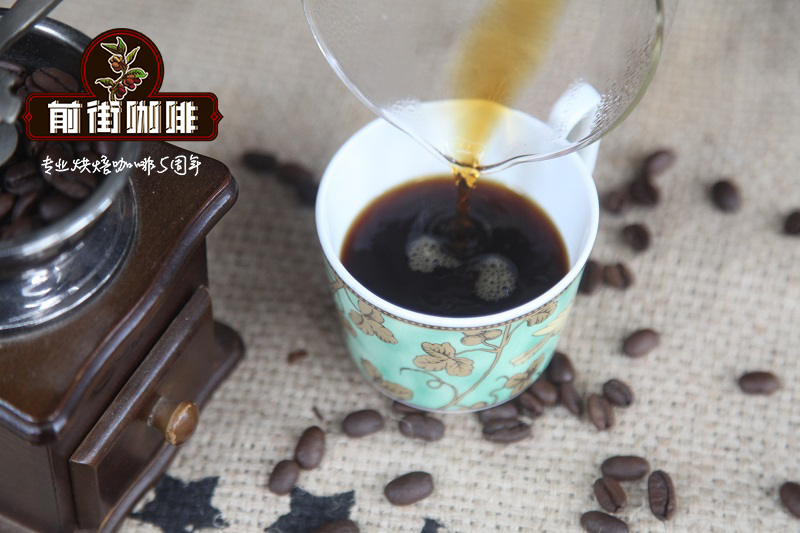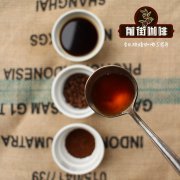Why do sun beans taste different from water-washed beans? Why is honey-treated coffee so sweet?

It has a great influence on the flavor, aroma and mellow thickness of coffee, and it is also an important difference for many people to choose coffee beans.
In this paper, let's explore the chemical changes that occur during the treatment process and how these changes affect the flavor in the cup.
Coffee flavor and aroma brought by origin
The flavor and aroma of coffee will be developed during roasting, and the aroma compounds will be transformed by many chemical reactions in raw coffee beans.
The degradation of monosaccharides and polysaccharides during baking will produce sweetness and caramelized aroma. On the contrary, the degradation of hydroxycinnamic acid (a phenolic compound) produces the aroma of spices. Hydroxyl amino acids such as threonine and serine are converted into volatile compounds called pyrazine and pyrrole, which produce the unique smell of coffee roasting.
How does the treatment affect the chemical composition of coffee?
Coffee fruit usually has two seeds, the periphery of which is covered by endocarp and pectin, and the outer layer has pulp and pericarp. The pulp of coffee fruit itself contains a lot of sugar.
Treatment is simply the method of removing seeds from the fruit. There are different traditional and innovative methods around the world, but coffee is usually treated by sun exposure or washing.
When using sun treatment, coffee will be directly exposed to the sun with belt meat. Washing will remove the pulp and peel before drying, while honey treatment is somewhere in between, that is, remove the pulp and peel of coffee before drying, but retain some pectin for treatment.
Treatment has an effect on flavor and aroma because of changes in sugar in the flesh left on sun-or honey-treated coffee, which significantly changes the chemical composition of raw beans. These changes will be reflected in the sweetness and mellow thickness of the final drink in the coffee. Let's take a closer look at what happens.
Sprouting
The coffee fruit is harvested when it is ripe, indicating that the seeds in the fruit are about to begin to germinate. Germination activates some enzymes of polysaccharides, that is, natural sugars begin to break down.
The researchers found that washed coffee had more enzyme activity than sun-treated coffee. This means that some of the compounds and free sugars that form aromas during baking are broken down during washing, which makes washed coffee tastier than sun-cured coffee because it contains fewer aroma compounds but is more acidic.
Ferment
Because of the fermentation of sugar in the pulp, tanned coffee is sweeter than washed coffee. Sun-washed coffee goes through the fermentation process, but because the pulp and pectin have been removed, the amount of enzymes used in washed coffee is much less.
During fermentation, microorganisms change proteins, carbohydrates and chlorogenic acid. More aromatic compounds are produced in sun-cured coffee, resulting in not only the sweetness of the coffee, but also the fruity, floral and caramel flavors that can eventually be drunk in the coffee. By contrast, washed coffee is cleaner and allows drinkers to recognize the flavor of a particular coffee.
The honey treatment process includes removing part of the pulp so that the pectin around the coffee beans can be better fermented, which makes honey-treated coffee sweeter and more creamy and nutty than sun-cured coffee.
Fermentation can have a great impact on the flavor, aroma and alcohol thickness of coffee, but the fermentation process needs to be carefully controlled. Excessive fermentation produces too much acetic acid and phenolic compounds, making the final coffee bitter or sour. And because of the density and diversity of microorganisms in coffee, it may lead to inconsistent and unpredictable fermentation results.
Beans that go through longer germination period and shorter fermentation time may have poor flavor performance, because both stages help to improve the flavor of coffee.
The influence of treatment on baking techniques
Above we have a general understanding of the effect of treatment on the chemical composition of raw beans, treatment will also affect the compounds that will be converted into aroma when baking, it is necessary to understand the effect of treatment when baking.
Sun-treated coffee retains more sugar and is more sensitive to heat during baking. Simple sugar molecules degrade quickly during baking and produce an unpleasant burning smell. This means that the baker needs to be more careful with the baking curve, especially in the early stages of baking.
Washed coffee is the most common and popular treatment, which brings out a clean flavor so that tasters can drink the flavor brought by a more distinct region and variety. But there are also many people who like the sweetness and fruit flavor of sun and honey treatment. No matter what kind of coffee you choose, now you have some idea of the effect of treatment on flavor.
This paper is written by Ver ô nica Belchior. Written and translated from Perfect Daily Grind.
Important Notice :
前街咖啡 FrontStreet Coffee has moved to new addredd:
FrontStreet Coffee Address: 315,Donghua East Road,GuangZhou
Tel:020 38364473
- Prev

What kind of aids do you need to prepare to make coffee? is it really necessary to have so many wardrobes?
Some people have many different coffee utensils and often make coffee in different ways, but have you ever wondered why so many wardrobes are needed? Wouldn't it be better to keep it simple? Usually people who make their own coffee must have a bean grinder, and there may be more than one, including electric at home and hand grinders for outdoor use. And electronic scales, and cooking utensils.
- Next

The history of coffee roaster is who invented the semi-direct fire and hot air which is better
Roasting green beans into aromatic coffee requires one important piece of equipment: a bean dryer. However, people have been drinking coffee for hundreds of years. At that time, there was no such advanced equipment. Instead, they started from the most spring way. Do you know the history of baking beans? Why are baking beans designed this way? How has history evolved? Let's look at the evolution of coffee roasting! coffee
Related
- Beginners will see the "Coffee pull flower" guide!
- What is the difference between ice blog purified milk and ordinary milk coffee?
- Why is the Philippines the largest producer of crops in Liberia?
- For coffee extraction, should the fine powder be retained?
- How does extracted espresso fill pressed powder? How much strength does it take to press the powder?
- How to make jasmine cold extract coffee? Is the jasmine + latte good?
- Will this little toy really make the coffee taste better? How does Lily Drip affect coffee extraction?
- Will the action of slapping the filter cup also affect coffee extraction?
- What's the difference between powder-to-water ratio and powder-to-liquid ratio?
- What is the Ethiopian local species? What does it have to do with Heirloom native species?

